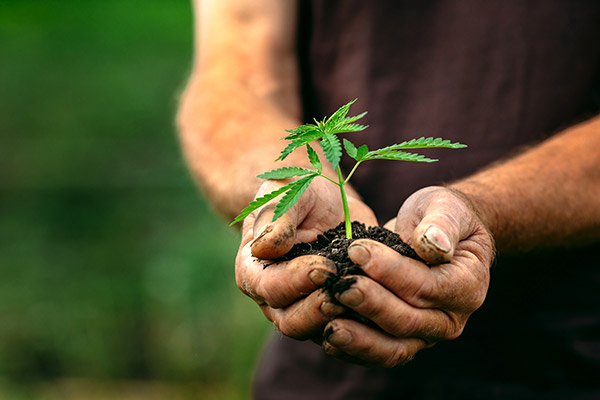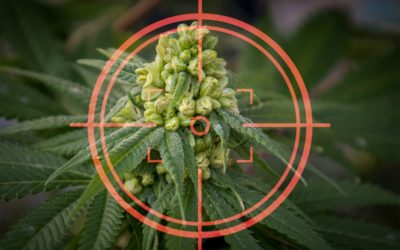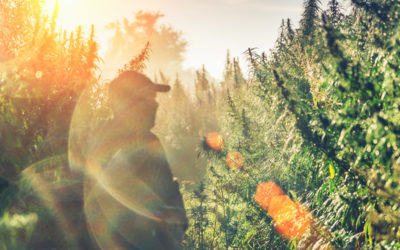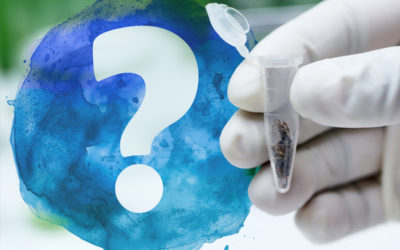Now that growing hemp for CBD use has been federally decriminalized, more and more farmers are taking to this booming crop. The amount of licensed acreage in the US has more than quadrupled since 2018.
Since the laws have so recently changed, nearly all of the CBD farmers are new. As a collective, hemp farmers are helping each other avoid mistakes and grow crops that will provide the best yields.
So if you find yourself with an open field and a handful of CBD hemp seeds, read on to learn a few common mistakes and how to avoid them
1. Using Poor Quality or Unknown CBD Hemp Seeds
Using the highest quality seeds available will get your crop off to the right start. Premium seeds have a better germination rate and will produce higher quality plants.
It’s also important to know what strain of hemp you’re growing. The best seed providers will have an extensive catalog listing detailed information specific to each strain.
Information such as sowing dates, expected flowering time, genotype, CBD and THC content, and harvest time, are essential for a successful grow and expected yield.
Each plant has different nutritional requirements and knowing what you’re growing is key to getting it right.
2. Improper Germination
Some attempts at growing CBD hemp seeds fail before they even get started.
While there are pros and cons to directly sowing seeds in the soil, this way is less labor-intensive and works well in most cases. Nevertheless, there are some things you should know about properly germinating your seeds.
Seeds like a humid, but not wet, environment with a temperature range between 71-77 degrees Fahrenheit.
Keeping seeds clean and free of contaminants will also help your germination efforts.
3. Planting in Deprived Soil
All cannabis plants require a lot of nutrients. While some require less than others, it’s a big mistake to plant seeds in nutrient-deprived soil.
Make sure your soil is rich in essential macronutrients like nitrogen, phosphorous, and potassium, or N-P-K. These essential nutrients give your plants the necessary energy to grow.
Research your specific strain, as it will require the correct composition of nutrients in the soil.
The soil should also be light and airy. Dense soil will not drain properly and will deprive the roots of oxygen.
A light and rich soil texture that crumbles when handled will provide a stable foundation for roots to anchor. It will also provide them with enough oxygen and proper water drainage.
4. Not Enough Light or Too Much Light
A common mistake beginners make is not giving the plants with the appropriate amount of light.
The correct amount of light for CBD seeds will differ from strain to strain and even change during different stages of the plant’s growth.
If your hemp plants do not receive enough light, they will waste much-needed energy in an effort to grow closer towards their light source. This will result in tall, spindly plants that cannot support their own weight. The energy expended in growing so tall deprives the plant of its flowering potential.
Too much light, on the other hand, can cause its share of problems too. If plants are exposed to too much sunlight they will overheat and become susceptible to burns on the leaves.
5. Underfeeding or Overfeeding Your Plants
As we already know, cannabis plants are very sensitive to the nutrients received in the soil. That’s why underfeeding and overfeeding cannabis plants is a mistake you must avoid.
Learn the proper amount of nutrients your plant requires, and stick to the feeding schedule. You may think the more fertilizer, the better, but that’s not the case when it comes to your hemp crop.
An imbalance in fertilizer will cause problems for your plants. It is best to learn how to assess and recognize the signs of over or underfeeding your hemp crop.
6. Missing the Signs of Wrong PH Levels
Being able to spot the tell-tale signs of an incorrect pH level often comes with experience. Once you understand the pH requirements for your plants, test the soil to know your exact levels.
If a soil amendment is needed, use a natural source to adjust the pH. Lime or wood ash will increase your soil pH, and aluminum sulfate or sulfur will lower your pH.
7. Not Doing the Right Research
It’s important to find solid hemp knowledge and, more specifically, how it applies to your crop. The experience will come, but until then do not rely on Google results alone for your hemp growing knowledge.
Consult other professionals in your area who are doing the same thing. You might also reach out to your seed supplier for any information pertaining to your specific strains.
8. Overwatering Your Crop
It can be easy to overwater your plants without knowing it. Overwatering is often far worse for your plants than the occasional underwatering.
Hemp plants can spring back from temporarily dry soils. Soil that is consistently too wet will deprive the roots of oxygen. The overly wet soil environment will lead to problems like mold, fungus, and root rot.
Time to Get Your Hands Dirty

While all beginners are bound to make mistakes, an adequate knowledge base will get you off to a good start. Like anything new, it will take time and repetition to get it right.
It’s not a bad idea to keep a detailed journal regarding your CBD hemp seeds and plants to note your successes and failures. Learn from your mistakes, but also learn from others!
Consulting your fellow farmers is a sure way to get ahead of the game. You can also contact us with any questions you may have.




0 Comments